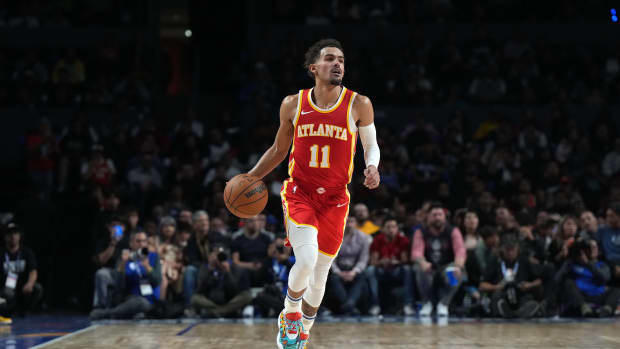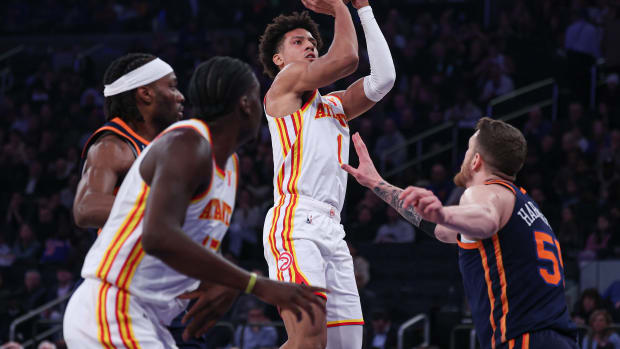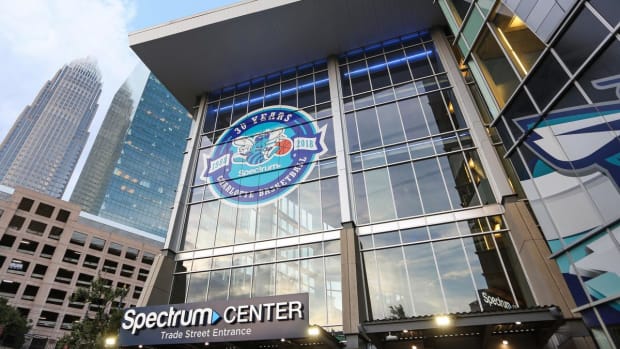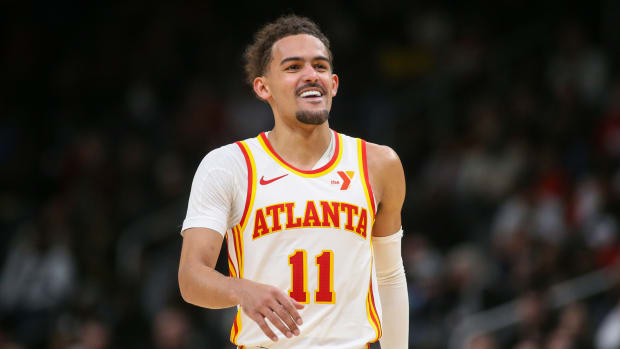Hawks Player Preview: Trae Young
It’s one thing for a team to prominently feature a rookie in its offense, and quite another to build the entire system around him. Even as he struggled through long stretches of last year, Trae Young justified that role in his first NBA season. Despite streaky shooting and copious turnovers (not to mention feeble defense), Young exerted a command over Atlanta’s offense while carrying one of the biggest loads of any rookie in NBA history. The Hawks operate at his whims, and often his intuition leads to more profitable options than any system ever could.
Young is capable of shouldering an NBA offense largely because of what he makes possible for others. He could eventually become a transformative shooter, but his most powerful offensive weapon will always be his creativity and ability to make the game easier for others. He knows how to manipulate defenses to create windows and has nearly every pass a primary ball-handler could need. Where some players capitalize on existing windows or simply move the ball within an offensive framework, Young actively creates advantages as a passer. He deceptively bends defenses and squeezes deliveries through the slimmest of windows. He’ll turn the ball over regularly, but easy buckets like this can’t happen if he doesn’t take risks:
Those passes are made possible in part by Young’s ability to stretch defenses with his jumpshot. Though he shot a paltry 32 percent on 3-pointers last year, opponents treated him as though he were far more dangerous. Only Steph Curry made more shots from at least 28 feet, and Young’s willingness just to take deep 3s has a positive effect nearly equivalent to the points themselves:
That sort of range helped open up the floor for the Hawks and made pick-and-rolls all the more difficult to contain. Young is one of the NBA’s most imaginative pick-and-roll passers and a skilled lob artisan. While he ranked in just the 46 percentile leaguewide as a finisher in the pick-and-roll, John Collins, his primary partner in the two-man game, averaged 1.25 points per possession as a roll man – a testament to Young’s prowess in that action:
When weak-side defenders sag down to prevent lobs to Collins, Young can sling cross-court passes to shooters with either hand:
Perhaps his single biggest challenge this season will be finding a healthier balance between boldness and recklessness. Young ranked third in the NBA in total turnovers and coughed the ball up on over 15 percent of his possessions last season – a major contributor to Atlanta’s team turnover issues. It will be on Young to help rectify them – an undertaking that separates the NBA’s best offensive catalysts from the merely good ones. “It’s all about the feel of the game and how the game flow is going,” Young said. “I’m smart enough to know when to take chances. It’s just what I do.”
Opponents will be more intent upon disrupting Young’s flow in 2020. The drawback of so rapidly acquainting himself with the NBA is that it provides the rest of the league a better understanding of his tendencies, strengths, and shortcomings. Teams can design defenses more specifically oriented toward stopping him. Traps and blitzes are nothing new to Young – he saw nearly every conceivable coverage last season – but teams will employ them more frequently this year. “A lot more this season,” Lloyd Pierce predicts. “For Trae it’s going to be an adjustment. He and John were great in pick-and-rolls last year. I don’t expect that to be extremely great this year. I expect it to be something we have to adjust to or we have to play through other guys.”
The adjustment is already underway. Three of the Hawks’ five preseason opponents blitzed Young regularly in the pick-and-roll, preventing him from accessing his preferred spots on the floor:
When he was able to turn the corner, bigs often dropped back to the rim in order to take away lobs and layups. “A lot of teams are going to be trying to stop that pick-and-roll between me and John,” Young said. “So I’ve got to find other ways to score. I know how to get my teammates involved, how to get them in good spots and situations to score.” That could make floaters and even more prominent element of his game this season. Young took 22 percent of his shots from “short midrange” last season, per Cleaning the Glass, and made a tidy 46 percent of those looks. That is an important weapon for a guard like Young, whose size prevents him from finishing around or through length at the rim. Instead, he lofts silky teardrops over giants:
“I’ve had that since I got in the league,” Young said. “My floater is something that I’ve been pretty good at. It’s usually just whatever the defense is giving me that night.” Despite his soft touch in the paint, Young predictably struggled to finish inside as a rookie, making just 53 percent of his shots at the rim (14 percentile among guards). That mark will improve through physical and mental maturation, but it was symptomatic of his larger struggle to score efficiently. Despite his long-range prowess and encouraging scoring flashes, Young was one of the least efficient high-usage players in the league last season.
That’s to be expected from a first-year guard working under the weight of an entire offense, and he will improve with experience and better talent around him. Atlanta can still run an efficient offense through him if he tops out as a slightly above-average scorer. But to become elite, Young must be as well. The Hawks don’t need that to happen this season, or even the next. However quickly a rookie bursts onto the scene, growth in the NBA always takes time. The point guard’s efficiency and decision-making should both improve, and Pierce intends to spreading ball-handling duties around to let Young find easier shots working without the ball. Young plans on dialing up his effort on defense, where he may have been the worst player in the NBA last season.
Atlanta isn’t going anywhere without Young, and can afford to be patient as it integrates a youthful and promising core of players. The Hawks have made clear their vision for the future. It’s on Young to find the clearest avenue toward it.





